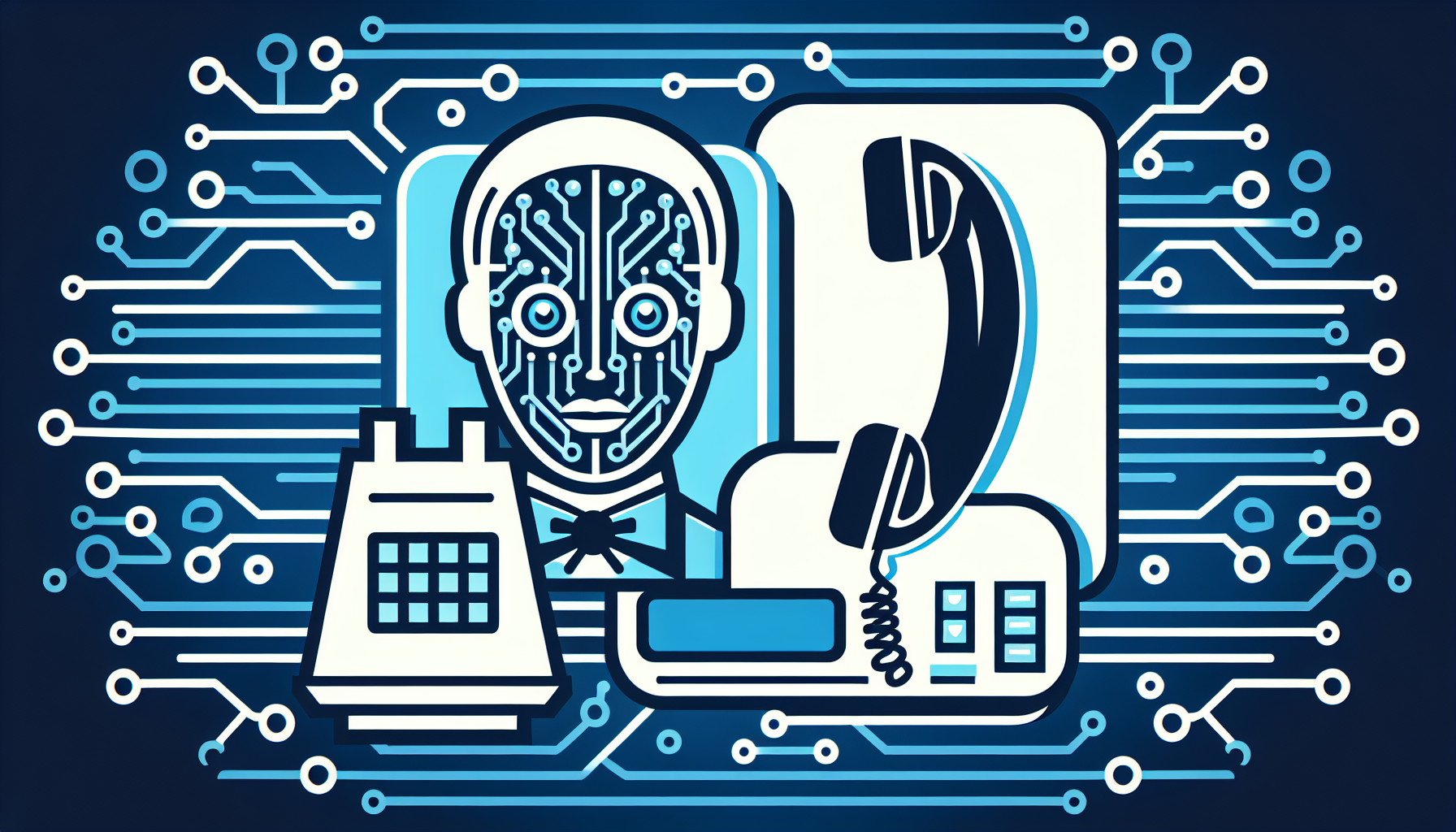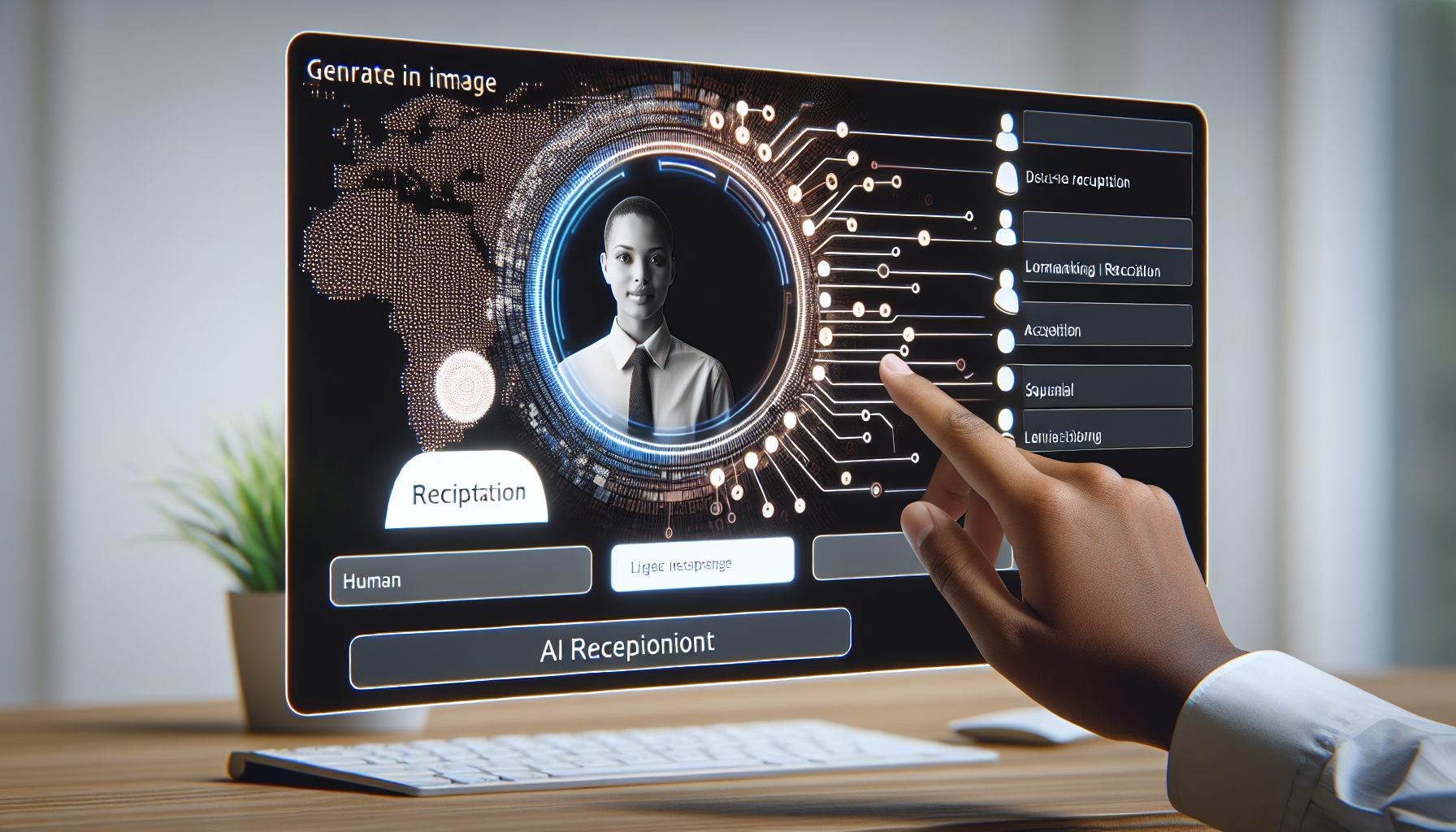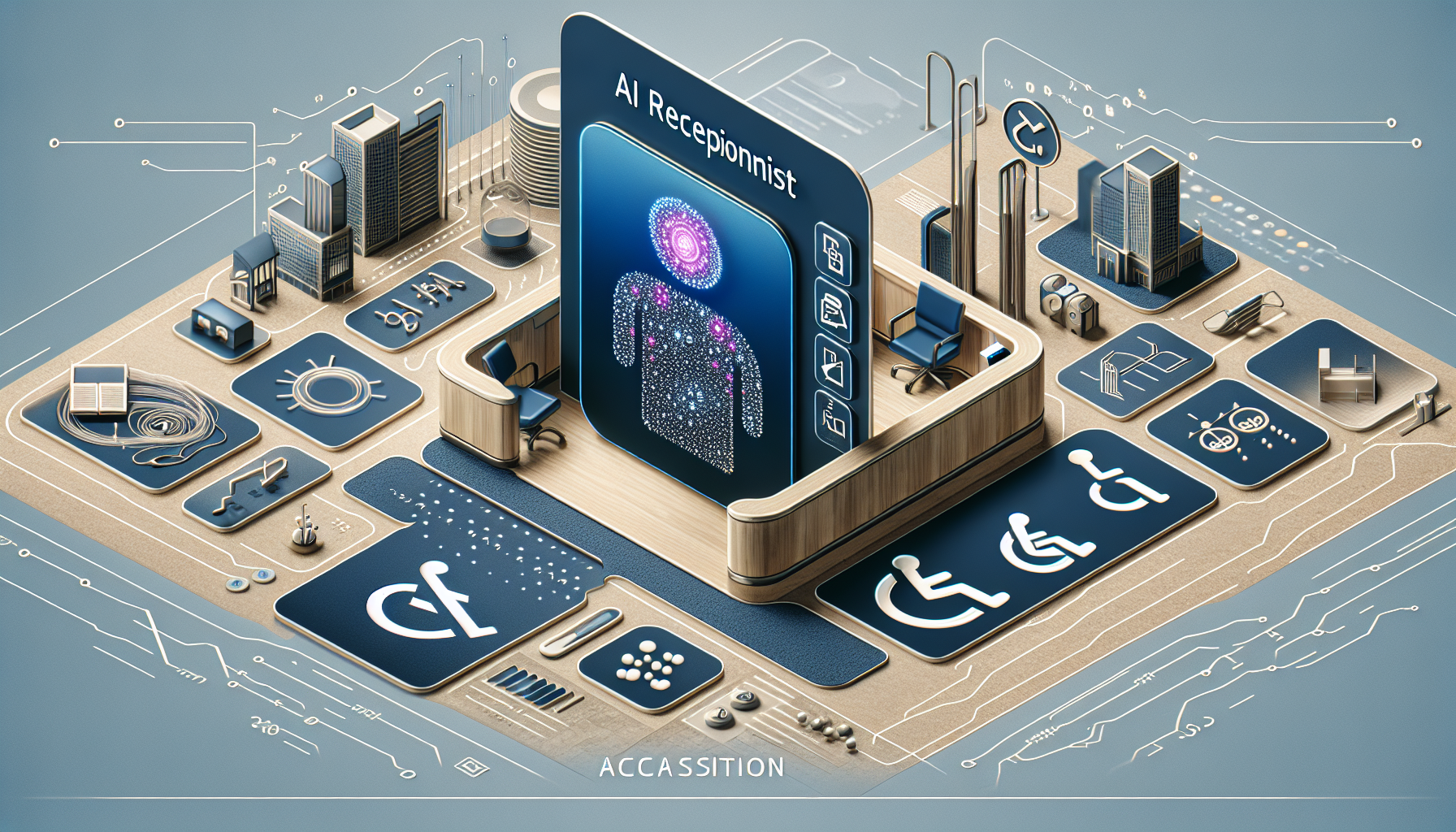
The age of traditional receptionists being the first point of contact for businesses and institutions is gradually evolving. Today, a more innovative and universally accessible option has emerged in the form of Artificial Intelligence (AI) Receptionists. Catering to a much broader demographic than ever before, AI receptionists are revolutionizing the way businesses communicate by creating an inclusive environment for differently-abled callers.

AI receptionists utilize advanced AI technologies to interpret and respond to incoming calls, presenting a modern alternative to human receptionists. But, their function expands beyond simply answering and forwarding calls. Through adaptive and dynamic programming, AI receptionists are equipped to recognize the unique needs of differently-abled callers, providing them with an optimal medium of communication.
A crucial feature that underscores the pertinence of AI receptionists is their superior accessibility, specifically for individuals with distinct communication needs. For instance, callers with a hearing impairment can interface with an AI receptionist via text input, which is promptly read and interpreted by the system. Equally, those with visual impairments can benefit from the AI's voice communication abilities, along with braille display compatibility for written messages.
Another compelling advantage of AI receptionists is their 24/7 availability. This round-the-clock accessibility eliminates time-bound restrictions for all callers, improving consumer satisfaction and business relations. Equally, sophisticated AI algorithms can handle multiple callers simultaneously, avoiding hold times and non-responsive phone lines.
To summarize, AI receptionists are not merely a technological gimmick; they are a conscious step towards making businesses universally accessible and communicative. The range of features they offer accommodates fluid interaction with differently-abled individuals, enhancing their communication experience.
In the following sections, we'll delve deeper into the detailed mechanics of how these AI receptionists function for differently-abled callers, shedding light on the sophisticated algorithms and inherent multi-functionality in this rapidly advancing communication system.
Artificial intelligence (AI) has been making significant strides in the realm of accessibility, especially in the field of telecommunications. A notable example is the use of AI receptionists equipped with advanced voice recognition technology and text-to-speech capabilities. This stimulates a more inclusive communication environment, especially for differently-abled callers.
These AI receptionists are ingeniously designed to understand and accurately interpret verbal cues from callers with speech impairments. They leverage an elaborate tome of pre-recorded vocal samples and AI algorithms to decode spoken language. This ability to interpret diverse vocal nuances significantly enhances the user experience for differently-abled callers, making telecommunication a seamless process as opposed to a challenge.
In addition to intelligent voice recognition, AI receptionists employ sophisticated text-to-speech technology. This tool converts text content output from the AI engine into a clear, human-like voice, providing a user interface that is easily comprehensible and user-friendly. To ensure optimal usability, many AI receptionists offer controls that allow the user to adjust parameters such as volume, pitch, speed, and intonation, making the interaction more personalized and comfortable for individuals with differing capabilities.
Making the world more accessible to everyone, irrespective of their unique abilities, is an ongoing endeavor. AI receptionists, with their voice recognition and text-to-speech capabilities, exemplify this progressive ethos. Leveraging these advanced features, individuals with speech impairments can confidently navigate telephone communications with fewer barriers and a greater sense of independence.
Given that this technology is rapidly evolving, there is a huge potential for even more innovations in the field of accessibility, thus enabling a wider range of differently-abled individuals to fully participate in our increasingly digital society.
As technology advances, more services are incorporating tools to make their interfaces easily accessible for differently-abled individuals. A prime example of this can be seen in AI Receptionist technology, which has made significant strides in providing visual assistance features to accommodate visually impaired callers.

The innovative implementation of text-based interfaces is one key feature that increases accessibility for visually impaired users. These interfaces display caller options in large, high-contrast text that can be easily read by those with low vision, and coupled with screen reader technology, they can audibly guide callers through the necessary steps to complete their call. In addition, the text-based interface is optimized for screen magnification, allowing for flexibility and ease of use.
Another crucial feature of AI receptionists is visual notifications. These visual notifications translate auditory cues, such as ringing or a busy tone, into easily identifiable visual signals. For example, if the AI receptionist is ringing, the text-based interface could flash a specific color or visual indicator, assisting those who may struggle with auditory recognition. The same applies when the call is connected, with the interface indicating the status change through distinct visual cues.
Accessibility isn't a choice, it's a necessity - and thanks to improvements in AI technology, innovative features such as text-based interfaces and visual notifications are paving the way for more inclusive communication platforms. Because everyone, regardless of ability, deserves the opportunity to communicate flawlessly and efficiently.
As technological advancements are increasingly permeating our lives, it's imperative to ensure that these innovations remain inclusive and accessible to all. Enter AI Receptionists, artificial intelligence-based voice assistants now making headway in the telecommunications sector, designed with numerous features catering specifically to differently-abled individuals. One particularly noteworthy subset is the range of options developed for dealing with hearing impairment.
For those facing hearing challenges, real-time captioning stands out as a transformative feature. It empowers individuals to engage in conversations with these AI receptionists seamlessly, providing visual aids instantly during calls. Numerous modern smartphone models are now equipped with real-time captioning, and AI receptionists can utilize this technology to improve user interaction. By converting the spoken word into on-screen text in real-time, this feature allows hearing-impaired users to stay fully engaged in the conversation.
Another essential option is the adjustable volume settings. This feature allows callers to set the volume at a comfortable level, ensuring clearer, easier interaction with the AI receptionist. Improved audio clarity, made possible by volume regulating technology, could be a game-changer in facilitating better communication between hearing-impaired individuals and AI Receptionists. Action on Hearing Loss has more details about such volume adjustable phones, and how they can be a benefit for hearing-impaired individuals.
Moreover, these AI receptionists also offer settings to control speech rate. Users can adjust how fast or slow the AI voice speaks, enabling easier understanding of the conversation. Accessibility features such as these make AI receptionists a vital tool for individuals with hearing impairments, demonstrating a real commitment to inclusivity in technology development.
AI receptionists are progressively bridging the gap to provide an inclusive atmosphere in telecommunication, and these hearing impairment adaptations highlight this ongoing shift. The future of these AI-based solutions and their potential for cultivating greater inclusivity in our society is not just exciting – it’s essential.
Among the most innovative digital solutions today, AI receptionists stand out, especially for their wide-ranging accessibility features. For callers who are differently-abled, these AI technologies provide a number of capabilities that can be easily customized and personalized, making it considerably easier to navigate phone systems, access information, and communicate effectively.
One of the leading benefits of AI receptionists is the ability for users to tailor the system to their unique requirements, a feature that can be remarkably useful for individuals with differing abilities. For instance, users with visual impairments can ask the AI system to read textual data aloud, allowing them to receive information without the need for sight.

In contrast, people with hearing disabilities might opt for a speech-to-text feature that transcribes spoken responses in real time. This textual representation of speech greatly enhances their ability to engage with the AI system, and ultimately, provides a more inclusive experience. Moreover, various AI systems now include enhanced vibration notifications, specifically designed for those with hearing impairments, further promoting ease of interaction.
Yet another impressive customization option offered by AI receptionists for differently-abled callers includes the use of simple voice commands. Callers with mobility impairments can control the AI system with speech alone, doing away with the need for extensive button pressing or touch interaction.
In essence, these advanced personalization features significantly improve the user experience for differently-abled individuals. By incorporating AI receptionists equipped with such features, organizations not only demonstrate their commitment to inclusive usability but also increase the potential for higher customer satisfaction among all users.
Suffixationally, as AI technology evolves, it’s reasonable to expect that additional adaptive features will be incorporated, further increasing the utility of these systems for all users, regardless of ability or situation. This reinforces the importance of continued technological development in pursuit of a more inclusive digital landscape.
As the artificial intelligence (AI) sector continues to evolve, it becomes imperative to build technology with the needs of differently-abled individuals at its core. The promise of AI receptionists lies in their ability to deliver seamless support to all callers, regardless of their physical capabilities or communication preferences. The future of AI in improving accessibility is multifaceted and deeply encouraging.
One significant area of development comprises the integration of AI with assistive technology. AI-powered receptionists have begun incorporating features like real-time transcription that can profoundly benefit hearing-impaired individuals. TechRepublic offers a rich discussion on this innovative composition.
AI receptionists are also becoming better equipped to handle sign language. Tech startups like Motion Light Lab are leveraging sophisticated algorithms to translate sign language into speech and vice-versa, offering a glimpse into the potential capabilities of future AI receptionists.
Another commendable development is the advent of AI receptionists that can detect and adapt to speech impairments, making communication hassle-free for callers with special needs. The Guardian has shed light on such advancements, citing Google’s Project Euphonia, which aims to train its voice assistant to understand dysarthric speech.
Leaders in the AI industry envision an era where voice assistants will not just recreate human interaction at a surface level but will genuinely understand and adapt to individual communication styles. This will involve understanding nuances in volume, speed, tone, and even the emotional context. Forbes provides an insightful perspective on the prospect of AI emotional intelligence.
To sum up, it’s an exciting era for differently-abled callers, where they can look forward to a more accessible communication system with AI receptionists offering customized conversations and interactions. The essence of future AI technology lies in its ability to manifest True Inclusivity, where every user feels understood, catered to, and truly included.
Start your free trial for My AI Front Desk today, it takes minutes to setup!








